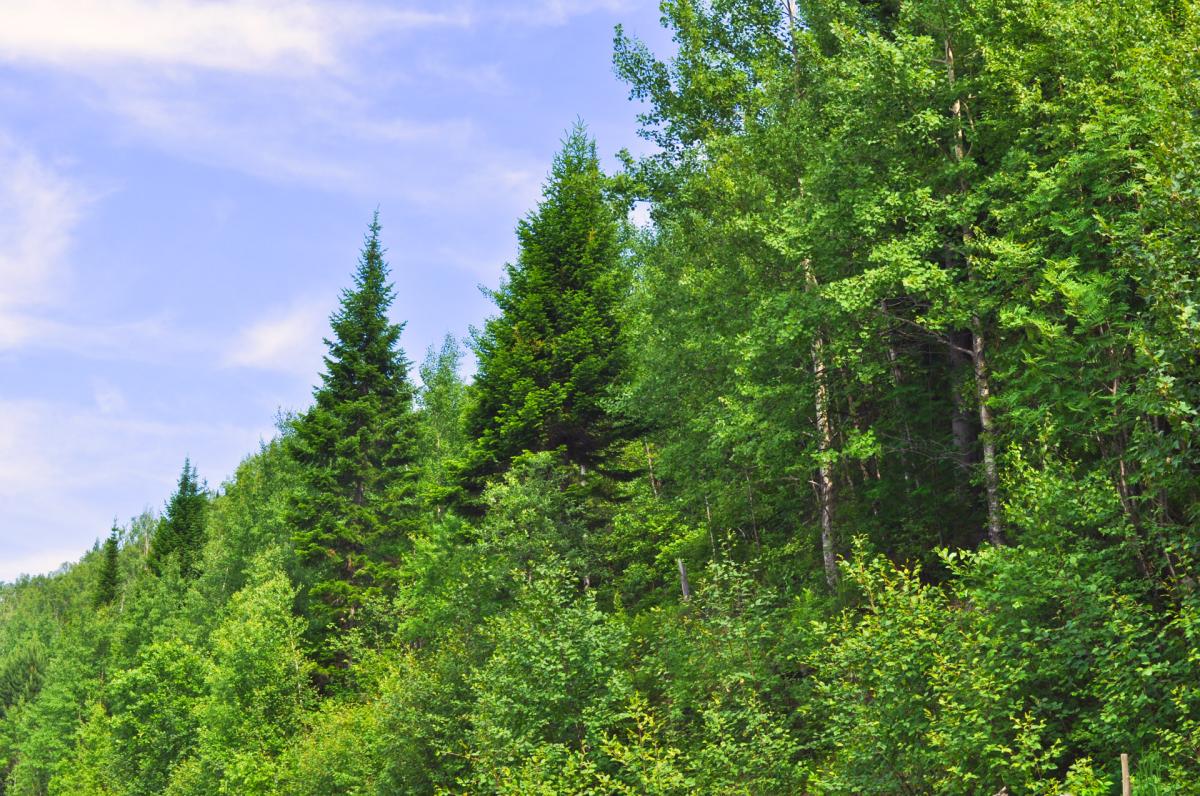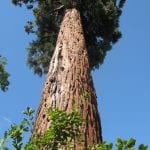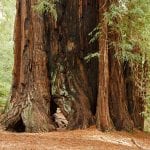
Trees are the type of land plant that can grow and live longer than the rest; What's more, there are some that exceed a millennium of life, such as redwoods, olive trees or holm oaks. These are characterized by having a slow development rate, and also flower after a few years after the germination of the seeds.
But if you go to, for example, a nursery or a garden and see one that you like, would you know how to calculate its age? Well, it's not easy without counting the growth rings. Therefore, below we will tell you how to tell the age of a tree (regardless of whether he is alive or not).
Calculate the age of the tree by counting its rings

Trees, like other plants (and animals) depend a lot on the climate and the conditions in the environment. In the case of our protagonists, this is something that will be reflected in what are known as growth rings: some are lighter, others darker; some thicker, and others thinner.
Well, you have to know that those that are lighter were formed in spring, while the darker ones did it in late summer or early autumn. But also, a thick ring means that the tree has been able to obtain all the nutrients and water it has needed at that moment.
And there is even more: if there is a scar of a much darker color, or even black, you will know that that year the tree suffered a fire (or burn).
Knowing this, calculating their age is relatively simple: from the center out, you just have to count the rings one by one.
How to know the age of a tree without cutting it down?
The fastest way is to take a sample with a more or less triangular shape from the trunk with the help of a Pressler drill to be able to count how many rings it has. But first of all it is important that you know that there is another way, and that it will not do any harm to the plant. Yes, it may take you a little longer, and that it is not as exact as the rings, but it is quite close.
For that, you need to know:
- How much is the circumference of the trunk (Take the measurement at a height of one and a half meters from the ground).
- Average growth rate. Not all trees grow at the same rate: for example, maples, beech and oak trees tend to increase in circumference an average of 1,5 centimeters per year. But if you have difficulty finding it, you can put 1,3 if you suspect that it is slow growing, or up to 1,9 centimeters if, on the contrary, you think it grows fast.
You have it all? Now you just have to follow our example: let's suppose that we have a tree whose circumference measures 300 centimeters.
The next step is divide the circumference by the average growth rate, that is: 300 centimeters between 1,3 (for example), which gives: 236,7 years, or 237 to round.
But as we say, it is not an exact calculation. In addition to the plant's own genetics, there are other factors that must be taken into account: such as the climate or the availability of water and nutrients. In a very rich and fertile soil, if the temperatures are mild it can grow even more and better than in its natural habitat, especially when it is cared for in a garden.
In this sense, I myself have a Pseudobombox ellipticum that during its first years hardly grew at all, but in just one year it gave a stretch of 80 centimeters. What changed compared to other years? Well, really, just one thing: it was paid more frequently (before it was only done once or twice in the whole year, now it is done once every month or two months).
Regarding irrigation, it remained the same (3 times a week in summer, and considerably less in winter). So yes, I am convinced that inside it has wide growth rings and some shade of brown darker than those of the others.
What are the trees that live the longest?
- Pinus longaeva // Image - Wikimedia / J Brew
- Sequoiadendron giganteum
- Sequoia sempervirens // Image - Wikimedia / Allie_Caulfield
If you want to know some of the oldest trees in the world, here is a selection:
- Pinus longaeva: the long-lived pine, is an evergreen conifer that lives in the mountains of the United States, towards the southwest. It grows very slowly, so it is rare to see specimens that exceed 10 meters. The diameter of its trunk can be up to 3,6 meters. Its life expectancy is astonishing, as it can live for 5000 years.
- Sequoiadendron giganteum: the giant sequoia is an evergreen conifer that lives in the Sierra Nevada of California. It reaches an average height of 50 to 85 meters, and has a diameter of 5-7 meters. Its life expectancy is 3200 years.
- sequoia sempervirens: evergreen conifer well known by the name of red sequoia. It is found on the Pacific Coast of North America, and reaches around 100 meters, with a trunk diameter of 7,9 meters. It has an average life expectancy of 1200-1800 years.
What did you think of this topic?


